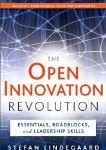Aug01
Frugal Innovation at NASA
Point: Budget constraints demand frugal innovation.
Story: In 2005, NASA’s Constellation program – tasked with designing a way to get humans to the moon and eventually to Mars – suffered a 45% reduction in R&D budgets during the process of getting Constellation running. “We knew those resources weren’t coming back,” said Jeff Davis, Director of the Space Life Sciences Directorate at NASA’s Johnson Space Center. “We thought to ourselves, we can’t get this done just doing 45% less. We need to approach this whole program in a new way.”
Davis’ team looked for new ways to work and began exploring alliances and external innovation platforms. The team hit upon the idea of using open innovation challenges at about the same time that President Obama’s Open Government Initiative encouraged public participation and the Office of Management and Budget issued guidelines on using prizes to spur public participation to solve innovation challenges.
Using the InnoCentive platform, Davis’ team issued an open innovation challenge entitled, “Data Driven Forecasting of Solar Events,” seeking solutions for how to predict particle storms that would pose a hazard to the Constellation spacecraft above the earth’s atmosphere. An engineer from rural New Hampshire provided the winning solution. White House Chief Technology Officer Aneesh Chopra described the results:
“I share with you the results of NASA’s early experience with Innocentive’s scientific expert network platform, a platform of 200,000 scientists, where NASA said it would pose a few difficult scientific challenges. One of the challenges was, ‘how can we forecast solar activity to better predict when to release our rockets into space?’” This was a vexing problem that NASA had been grappling with for more than 30 years. By putting the challenge out to the public, a semi-retired radio frequency engineer living in rural New Hampshire had the opportunity to share his idea on how to address the problem. [All the engineer needed] was a simple Internet connection. No complicated RFP, the need for a lobbyist, some convoluted process – just a smart person in our country who could help solve a difficult scientific challenge and was paid a modest $30,000 for that insight.”
Action:
- Consider open innovation methods such as external challenges as a cost-efficient way to spur innovation.
- Subdivide large R&D efforts into smaller R&D challenges that members of an open innovation crowd are more likely to be able to address
- Use a pre-existing platform to quickly reach a critical mass of solvers
Sources:
Open Innovation Marketplace, by Alpheus Bingham and Dwayne Spradlin, Financial Times Press, 2011.
Aneesh Chopra, “Rethinking Government” address to the Personal Democracy Forum 2010, posted June 12, 2010
NASA Innovation Pavilion on InnoCentive.com
2 Comments »Case study, How-to, Innovation, open innovation, R&D, Strategy











